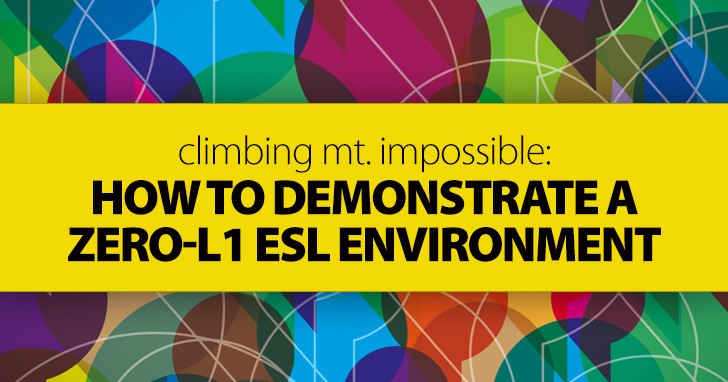Rinse and Repeat: 4 Ways to Establish Great ESL Classroom Routines


A very experienced and gifted teacher walked in and spent an hour teaching us to use Turkish - a language of which none of us spoke a word - without using any English at all. This made an extraordinary impression on me, and brought home the truism that L1 (the students’ first language) is not, in fact, needed to teach L2 (the target language). Many have doubted this, including my own trainee ESL teachers, but I’ve developed a methodology to overcome this skepticism and prepare my students for a lifetime of teaching English exclusively in English.
This topic has been covered in great and illuminating detail elsewhere so I’ll be very succinct: If you’re teaching bus drivers how to fly a plane, you wouldn’t do so from the driver’s seat of a bus. Only by doing can we genuinely learn, and teachers around the world, even from the most traditional of educational backgrounds, are finding that L1-only (or very nearly so) environments are a far more efficient context for language learning.
For this to work, we need to view everything as a resource. Teaching without L1 is a tremendous challenge, so any learning aid you can put your hands on is potentially helpful. Consider any and all of these:
Put yourself in your students shoes; a good way of doing this is to imagine that a space alien descends from the stars and begin speaking to you. We struggle, I think, to envisage the utter strangeness of such an act. Our regular method of communication, one which has been subject to life-long habituation and practice, is entirely gone. In such a radical circumstance, what kind of space alien would you prefer to meet?
Well, a smiling alien would be a good start. Perhaps one who used their two hands in a broadly familiar way. One whose eyes echoed their sentiments and indicated their feelings and their wish for a response, as ours do. We’d be more comfortable with an alien who knew that shaking hands is a welcoming gesture, and that applauding or giving a thumbs up is a positive sign. Consider those universal symbols of enjoyment, partnership, togetherness and openness; these are exactly what we’d like our new alien friend to embody.
Consider this extremely carefully, as it is very easy indeed to over-reach during this initial session. Your students will take time simply to get used to the odd sounds coming out of your mouth. Without concession to L1, there will also be some resistance, particularly if they guess (or know for sure) that you speak their own language; why is this person sounding like an alien when I know they’re perfectly capable of sounding like me?
For a model, or first lesson, choose a handful of short, very common phrases. Language learning often works best when it is personalized, so perhaps begin with the basic personal statements:
For a very first lesson, two of these pairs would be a great achievement. To adjust to the question form requires verb conjugation, which is by no means common to every language.
As a partner to these statements and questions, choose a simple lexical group, for example:
Very roughly, I would aim to teach six or eight words in a forty-minute class during which I would also teach and thoroughly practice two or three pairs of personal statements and questions. This may also prove to be ambitious; our aims, at this embryonic stage, are necessarily realistic and our teaching should be responsive to the students’ uptake, their willingness to practice and produce, and their stamina. After all, doing something entirely new is often rather tiring.
Having decided our content, we can organize a good structure for the class. A regular ESL class might begin with review, then include the presentation of the day’s new material, followed by controlled practice, then free practice. This is a time-honored and successful model, and there’s nothing wrong with it. However, given that the content is minimal, and the need for practice is overwhelming, we can organize a quick, neat flow of events which centers around a brief presentation, jumps quickly into controlled practice, emphasizes free practice (which could be the longest section by far) and then repeats. Setting up a cyclical approach like this lets the students learn a pattern: Watch, Drill, Practice, Review.
Here’s an example lesson plan for a zero-L1 model lesson. (Note: S-S means ‘Student to Student’, an interaction pattern best exemplified by pairwork; ‘cross-class’ means dialogue between students who aren’t sitting together; ‘drill’ means repeating a word to practice its pronunciation; Q&A = question & answer.)
‘My name is’. T uses hand-on-chest gesture and repeats. T uses name card on his desk. T presents “What is your name?” with question gesture. Students produce name cards. T repeats, “My name is…” and uses gesture to encourage completion. T writes ‘name’ on board and drills. (2-3 mins)
T models pairwork practice of Q/A pattern using hand puppets, gestures, or students. Pairwork is monitored. (2 mins)
T asks random students, “What is your name?” and checks reply. T then encourages cross-class S-S Q&A, checking pronunciation.
Days of the week. T uses calendar on wall to show today’s date and drills ‘Monday’. T uses fingers to count up through Tuesday (drill) and Wednesday (drill). T then uses question gestures and asks, “What day is it?” T writes ‘Day’ on board, adding the full word as the day’s names are learned.
T uses earlier pairwork model to set up S-S Q&A. Student uses calendar or fingers when asking, “What day is it?” Lots of monitoring and pronunciation checks.
T quizzes students using fingers, sets up cross-class S-S Q&A. Then review of “What is your name?”, also in cross-class Q&A.
T presents five easy food words using pictures or realia. T presents ‘I like…” and ‘I don’t like…’ using positive/negative gestures.
Remember, teach the class, not the plan. I always begin with what I hope are realistic objectives, but there will normally be an additional activity or two in my back pocket. These are normally light activities intended for review, but in this case, I have some additional content ready in case the lesson is going at a good pace and uptake has been solid.
Demonstrating this for a room full of skeptical trainee teachers can actually change lives and, though it is difficult and demanding of very thorough preparation, I urge you to try it out, and to encourage others to teach English entirely in English.